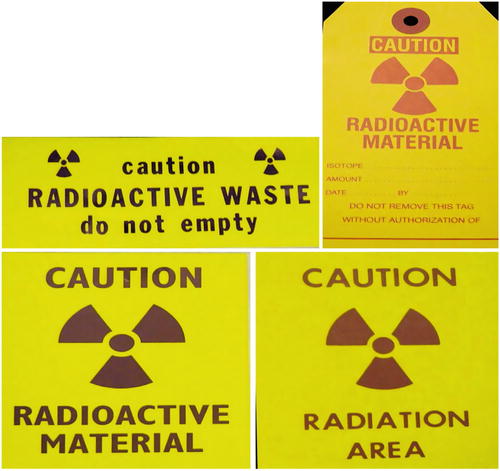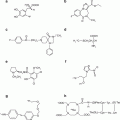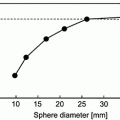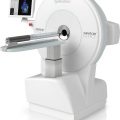(1)
Cleveland Clinic, Emeritus Staff, Cleveland, OH, USA
Keywords
NRC regulationsRadiation protection10CFR2010CFR35DOTNRC Regulations for PET Radiopharmaceuticals
Until 2005, the Nuclear Regulatory Commission (NRC) regulated only by-product materials that were produced in reactors, whereas all natural and accelerator-produced radionuclides were regulated by the state agencies such as the Health Department, Environmental Protection Department, etc. The US Congress passed a law in 2005 to include all naturally occurring and accelerator-produced radionuclides as by-product material and authorized the NRC to regulate them. Now all radionuclides, irrespective of the source of production, are regulated by the NRC. At the time of this writing, 37 of the 50 states in the USA have entered into agreement with the NRC to have the authority to regulate all by-product materials. These states are called Agreement States and implement the NRC regulations for the use of by-product material including PET radiopharmaceuticals. Regulations vary among 50 states, but the basic principles of regulations are the same in all states. However, state regulations can be stricter but not less strict than NRC regulations. In Nonagreement States, the NRC is responsible for regulations of PET radiopharmaceuticals. Given below are the highlights of some important and pertinent regulations concerning the clinical and research use of PET radiopharmaceuticals.
Because radiation causes damage in living systems, international and national organizations have been established to set guidelines for safe handling of radiations. The International Committee on Radiological Protection (ICRP) and the National Council on Radiation Protection and Measurement (NCRP) are two such organizations. They are composed of experts in the subject of radiation and set guidelines for working with radiation and limits of radiation exposure and dose to the radiation workers as well as the general public. The NRC or the state agencies adopt these recommendations and implement them into radiation protection programs in the USA. NRC regulations for PET radiopharmaceuticals are given in 10CFR20 for radiation protection and 10CFR35 for medical use. The following is a brief outline of these regulations.
Definitions
Roentgen (R) is a measure of external exposure to radiations and is defined by the amount of γ– or X-ray radiation that produces 2.58 × 10−4 Coulomb(C) of charge per kilogram of air. This unit applies only to air and γ– and X-ray radiations of energy less than 3 MeV.
Rad is a universal unit and is defined as
 In System Internationale (SI) units, it is termed gray (Gy) and given by
In System Internationale (SI) units, it is termed gray (Gy) and given by
 Rem is the unit of dose equivalent and accounts for the differences in effectiveness of different radiations in causing biological damage. It is denoted by H r and has the unit of rem. Thus,
Rem is the unit of dose equivalent and accounts for the differences in effectiveness of different radiations in causing biological damage. It is denoted by H r and has the unit of rem. Thus,
 where W r is the radiation weighting factor for radiation type r. W r is related to linear energy transfer of the radiation and reflects the effectiveness of the radiation to cause biological damage.
where W r is the radiation weighting factor for radiation type r. W r is related to linear energy transfer of the radiation and reflects the effectiveness of the radiation to cause biological damage.



In SI units, the dose equivalent H r is given by sievert (Sv).
 The values of radiation weighting factors W r for different radiations are given in Table 10.1. These were called quality factors.
The values of radiation weighting factors W r for different radiations are given in Table 10.1. These were called quality factors.

Table 10.1
Radiation weighting factors (W r) (quality factors) of different radiations
Type of radiation | W r |
|---|---|
X-rays, γ-rays, β –particles | 1.0 |
Neutrons and protons | 10.0 |
α-particles | 20.0 |
Heavy ions | 20.0 |
Committed dose equivalent (H T,50) is the dose equivalent to organs or tissues of reference (T) that will be received from an intake of radioactive material by an individual during the 50-year period following the intake.
Committed effective dose equivalent (H E,50) is the sum of the products of the tissue weighting factors (W T) applicable to each of the body organs or tissues that are irradiated and the committed dose equivalent to the corresponding organ or tissue (H E,50 = ΣW T × H T,50). W T accounts for the tissue sensitivity to radiation, and their values are given in Table 10.2. Note that this is due to committed dose equivalent from only internal uptake of radiation. This quantity is referred to as the effective dose.
Table 10.2
Tissue weighting factors, W T, of different tissues
Tissue | W T a |
|---|---|
Gonads | 0.25 |
Breast | 0.15 |
Red bone marrow | 0.12 |
Lungs | 0.12 |
Thyroid | 0.03 |
Bone surfaces | 0.03 |
Remainder | 0.30 |
Total body | 1.00 |
Effective dose equivalent (H E) is the sum of the products of the dose equivalent to the organ or tissue (HT) and the weighting factors (W T) applicable to each of the body organs or tissues that are irradiated (H E = ΣW T H T).
Deep-dose equivalent (H d), which applies to the external whole-body exposure, is the dose equivalent at a tissue depth of 1 cm (1000 mg/cm2).
Shallow-dose equivalent (H S), which applies to the external exposure of the skin or an extremity, is the dose equivalent at a tissue depth of 0.007 cm (7 mg/cm2) averaged over an area of 1 cm2.
Total effective dose equivalent (TEDE) is the sum of the effective dose equivalent (for external exposure) and the committed effective dose equivalent (for internal exposure). This is also called the total effective dose.
Radiation area is an area in which an individual could receive from a radiation source a dose equivalent in excess of 5 mrem (0.05 mSv) in 1 h at 30 cm from the source.
High radiation area is an area in which an individual could receive from a radiation source a dose equivalent in excess of 100 mrem (1 mSv) in 1 h at 30 cm from the source.
Very high radiation area is an area in which an individual could receive from radiation sources an absorbed dose in excess of 500 rad (5 Gy) in 1 h at 1 m from the source.
Restricted area is an area of limited access that the licensee establishes for the purpose of protecting individuals against undue risks from exposure to radiation and radioactive materials.
Unrestricted area is an area in which an individual could receive from an external source a maximum dose of 2 mrem (20 μSv)/h, and access to the area is neither limited nor controlled by the licensee.
Controlled area is an area outside of the restricted area but inside the site boundary, access to which is limited by the licensee for any reason.
Caution Signs and Labels
Specific signs, symbols, and labels are used to warn people of possible danger from the presence of radiations in an area. These signs use magenta, purple, and black colors on a yellow background. Some typical signs are shown in Fig. 10.1.


Fig. 10.1
Radiation caution signs and labels. (Fig. 16.1 on page 304, Radiation Regulations and Protection, in: Gopal B Saha (2013), Physics and Radiobiology of Nuclear Medicine, Springer; With kind permission from Springer Science and Business Media)
Caution: Radiation Area: This sign must be posted in radiation areas.
Caution: High Radiation Area or Danger: High Radiation Area: This sign must be posted in high radiation areas.
Caution: Radioactive Material or Danger: Radioactive Material: This sign is posted in areas or rooms in which ten times the quantity or more of any licensed material specified in Appendix C of 10CFR20 are used or stored. All containers with quantities of licensed materials exceeding those specified in Appendix C of 10CFR20 should be labeled with this sign. These labels must be removed or defaced prior to disposal of the container in the unrestricted areas.
Radiation Safety Officer
Large institutions employ radiation safety officers (RSOs) to implement and monitor various regulations for the use of radioactive materials. Smaller facilities such as clinics and stand-alone units often appoint authorized users as RSOs and hire an outside firm, which advises and monitors the radiation safety program at the facility. In these facilities, a Radiation Safety Committee (RSC) is not needed. The duties of an RSO include investigations of accidents, spills, losses, thefts, misadministrations, unauthorized receipts, uses, and transfers of radioactive materials and instituting corrective actions. In larger institutions, in addition to the RSO, an RSC is required, which is composed of individuals experienced in radiation safety and oversees the overall radiation protection program at the institution. The RSO works with the recommendations of the RSC in setting the policies and procedures for the purchase, receipt, storage, transfer, and disposal of the radioactive materials. The RSO conducts periodic checks of calibration of survey instruments, dose calibrators, and surveys of radiation areas and keeps records of all activities related to the use of radiation at the facility.
Occupational Dose Limits
The annual occupational dose limit to an adult radiation worker is the more limiting of (1) total effective dose of 5 rem (0.05 Sv) or (2) the sum of deep-dose equivalent and the committed dose equivalent to any individual organ or tissue, other than the lens of the eye, being equal to 50 rem (0.5 Sv).
The limit on the annual occupational dose to the lens of the eye is 15 rem (0.15 Sv).
The limit on the annual occupational dose to the skin and other extremities is the shallow-dose equivalent of 50 rem (0.5 Sv).
The annual occupational effective dose limit for the minor (<18 years working with radiation) is 0.5 rem (5 mSv). The occupational dose limit to the embryo/fetus during the entire gestation period of a declared pregnant radiation worker is 0.5 rem (5 mSv) with a monthly limit of 0.05 rem (0.5 mSv).
The effective dose to an individual member of the public is limited to 0.1 rem (1 mSv) per year.
Personnel Monitoring
Personnel monitoring is required when an occupational worker is likely to receive an excess of 10% of the annual dose limit from radiation sources and for individuals entering high or very high radiation areas. Monitoring is accomplished by using film badges or thermoluminescent dosimeters (TLD).
The film badge is the most common method of personnel monitoring because of its cost effectiveness. It gives reasonably accurate readings of exposure from β –, γ-, and X-ray radiations. The film badge consists of radiation-sensitive film held in a holder. Filters of different materials (aluminum, copper, and cadmium) are attached to the holder in front of the film to differentiate the exposures from radiations of different energies and types. The density of the film changes with exposure to radiation and is measured after development by a densitometer. The measured density is proportional to the exposure from the radiation. The film badges are changed monthly and therefore give integrated radiation dose to the worker for every month.
The TLD consists of inorganic crystals of lithium fluoride (LiF) or manganese-activated calcium fluoride (CaF2:Mn) held in holders and is commonly used for finger exposures. TLDs exposed to radiations emit light when heated at 300–400 °C and the amount of light emitted is proportional to radiation energy absorbed, thus giving the exposure value. The TLD readings are reasonably accurate.
Receiving and Monitoring of Radioactive Packages
All packages carrying radioactive material are required to be monitored for possible radioactive contamination. The regulations described in 10CFR20 of the NRC are the plausible guide for monitoring the received radioactive packages, and states normally follow this guide. Monitoring should be done within 3 h of delivery if the package is delivered in normal working hours or no later than 3 h from the beginning of the next working day if it is received after working hours.
Stay updated, free articles. Join our Telegram channel

Full access? Get Clinical Tree






